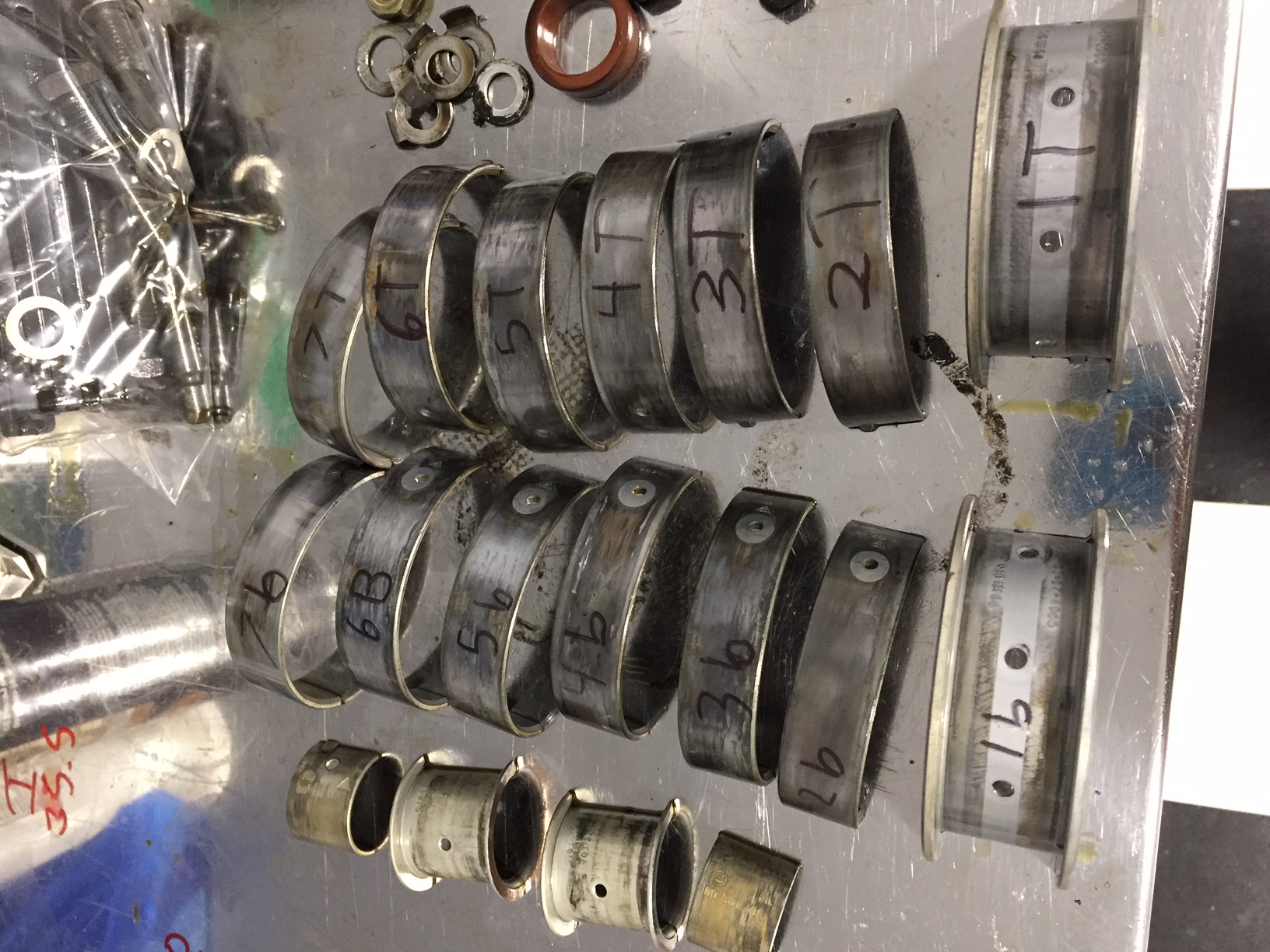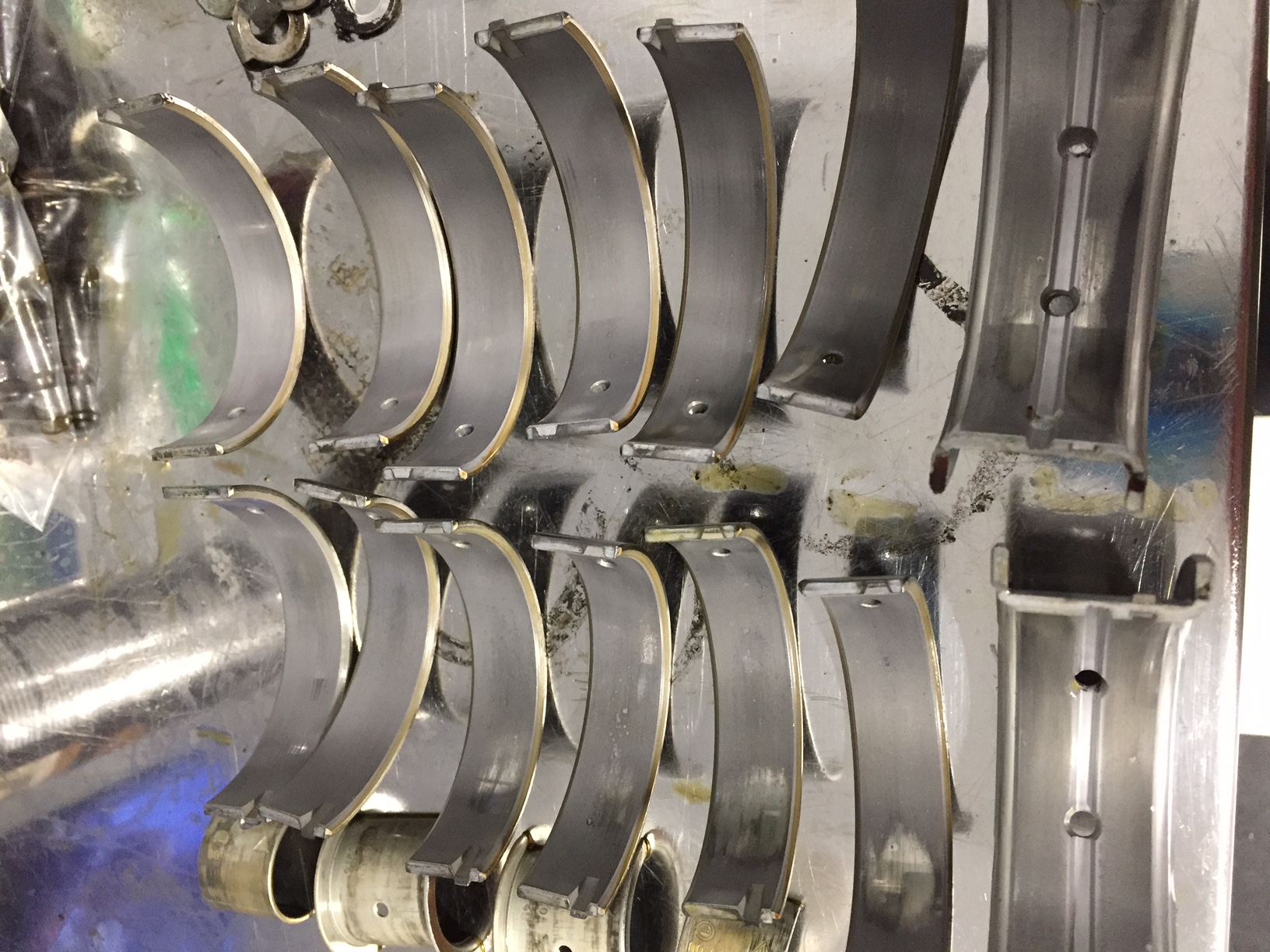This post is dedicated to my fellow engine nerds. Today we split the case on a 1988 3.2L Porsche engine with approximately 115,000 miles. Our detail oriented apprentice pulled, labeled and cleaned each of the main bearings so we could inspect them.
We all know the Porsche, flat six engine, crankshaft is very well supported by the eight crankshaft bearing surfaces. On this particular motor all of the wear was in the Y axis, i.e. up and down. Not very intuitive since the piston is moving through the X axis, i.e. side to side. However, we know that the engine rotates in a clockwise direction. So when the cylinder fires, the force isn't truly horizontal since the crankshaft has already rotated past X null when the cylinder pressure reaches the peak. So, we would expect to see 1-3 cylinders (left side) with associated wear on the south side of the motor and similar wear for 4-6 (right side) on the northern portion.
The majorty of the wear was seen on bearing 2 & 3. These are towards the flywheel as the main bearings are numbered back to front, opposite the cylinder order. The wear on the bearings is on the top. This makes sense because 2 & 3 have the #6 rod sitting right between them and it would fire upwards. So, long story short, maybe #6 was the superhero and making the most power. ;0
In reality, there are a few different considerations. The rear of the motor was leaking, evident by the silicone glue job coating the ENTIRE surface behind the flywheel. So it is possible that the clearances back there are a little loose allowing the crankshaft to flex and wobble in those bearings. We will not know that answer until the case is line bore checked.
The third variable is the crankshaft. I measured the bearings and they appear to be uniform all the way around. If the crankshaft is bent, or out of balance, this could cause the flex... especially when coupled with the power stroke.
The fourth thing that we will check related to this item will be the overall balance of the rotating assembly. Porsche has always recommended a tolerance of 6 grams and to place the heaviest of rods, pistons and pins towards the back of the motor. Maybe based on tolerance stack up it will be bigger. Hence the immense amount of time we spend balancing the assembly prior to installation.
Finally, and we can't really check for this, but maybe the oiling towards the rear mains was impacted somehow. In order to mitigate this for the future, we will completely disassemble, pull the plugs, and clean out any build up detritus that may have caused the issue.
Overall, the engine went for 115,000 miles with no problems other than some small oil seeping. The bearings, although showing wear, could probably have gone further. No babbitt was missing. Simply a polished area on the bearing. Most air cooled 911 owners would sacrifice great things for this reality.






Share to: